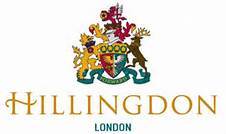| Day | Opening Hours |
|---|---|
| Monday | 8:30am - 6pm |
| Tuesday | 8:30am - 6pm |
| Wednesday | 8:30am - 6pm |
| Thursday | 8:30am - 6pm |
| Friday | 8:30am - 6pm |
| Saturday | 9:00am - 3pm |
A record number of people visited London in 2013, according to a new report from the Office for National Statistics. Here are five top local attractions.

A record number of people visited London in 2013, according to a new report from the Office for National Statistics.
The first nine months of 2013 saw the capital welcome 12.8 million visitors, an increase of 12% on the previous year. So, as London prepares to greet 16 million overseas visitors in 2014, here's my view on the top places to visit in its western outpost, Hillingdon.
Cowley Lock
Popular with anglers, food lovers and nature enthusiasts, the lock is an area of conservation which includes areas such as Old Mill Lane, Cowley Lake and bridges.
The lock is situated on the Grand Union Canal, which stretches 137 miles north to Birmingham.
Little Britain Lake – named so for its resemblance to the British Isles – features pathways for summer strolls, while waterside restaurants can be found overlooking Cowley Lock. The Toll House cafe is housed within a grade II listed building and was originally the lock-keeper’s cottage.
Ruislip Woods
This beauty hotspot in the heart of Ruislip Common offers a tranquil retreat and is open 24 hours a day, seven days a week. The 726-acre Ruislip Woods is the biggest single area of woodland in Greater London, featuring patches of grassland and marshes, with branches of streams gushing through. There’s also an abundance of activities available.
Regular visitor Maia Kelly, 21, said: “The walks are fabulous if you want to walk the dogs or just fancy a quiet wander. There is a little beach and even an aviary that the kids love. I take my little sister there regularly and it's one of her favourite places.”
Originally built as a feeder for the Grand Junction Canal in 1811, today the Lido includes an artificial sandy beach, restaurant and pub, with fishing areas.
Also included is a 12-inch gauge railway, run entirely by volunteers, which runs around the lake on a 2.5-mile ride.
Heathrow
The world’s busiest international airport, with an average of 190,000 passengers a day, is a vital gateway for holiday-makers desperate to escape the capital. However, the finer points of the airport are all too easily overlooked when rushing to catch a plane.
A total of £11bn has been invested in the terminal since 2003, with increasing emphasis being placed on the range of experiences open to passengers passing through. These include copious free beauty treatments in all terminals, an airside observation deck boasting 270 degree views of the southern runway and a restaurant from Michelin-starred chef Gordon Ramsay.
In June 2014, the new Terminal 2 will be opened to the public, to include a new 130-seat diner from culinary inventor Heston Blumenthal, with a new sculpture piece by eminent British artist Richard Wilson to be unveiled in April. The twisted aluminium artwork, named Slipstream, serves as a metaphor for travel and will be integrated into the building’s contemporary design.
Battle of Britain Bunker
The underground site of many an historic moment in World War Two, the Battle of Britain Bunker in Uxbridge is open year-round to the public. Housed inside the Grade I listed building is the Fighter Command No. 11 Group Operations Room, where much of the RAF’s Battle of Britain plans were coordinated, including the Dunkirk evacuation and D-Day.
The site, which still retains many of its original features, played host to many of the wartime greats, with Churchill, Eisenhower and King George VI watching the events of the war unfold. Free guided tours are available during the week, though entry in the winter months is by appointment only.
Manor Farm
The 22-acre site in Ruislip sits on top of a pre-Norman motte-and-bailey and includes historic buildings, archaeological remains and community venues, including tea rooms and a public library.
Its ability to appeal to a variety of interests and age groups makes it a must-see for both Hillingdon residents and London tourists.
Attesting to its multifaceted use, Fjóla Stenning, box office and audience development manager at Manor Farm, said: “On a typical day, you could see a group of children on a historical tour, watch craftspeople at work, people attending local society meetings, playing boules or browsing through books, art exhibitions and market stalls, Indian plays and Irish dance classes, children's parties and couples getting married - or people just enjoying the grounds, walking, playing, feeding the ducks and picnicking.”
This year, both the Ruislip and Wembley operatic societies will perform shows at the farm, while an exhibition will open in April focusing on the History of Ruislip through historic maps.
Undoubtedly the biggest draw of the year, however, is the medieval festival, which takes place every August, when historical re-enactment societies dress up in authentic costumes and indulge in a spot of derring-do with jousting on horseback.
Medieval crafts, market stalls, banquets and a whole host of children’s activities will also be available.